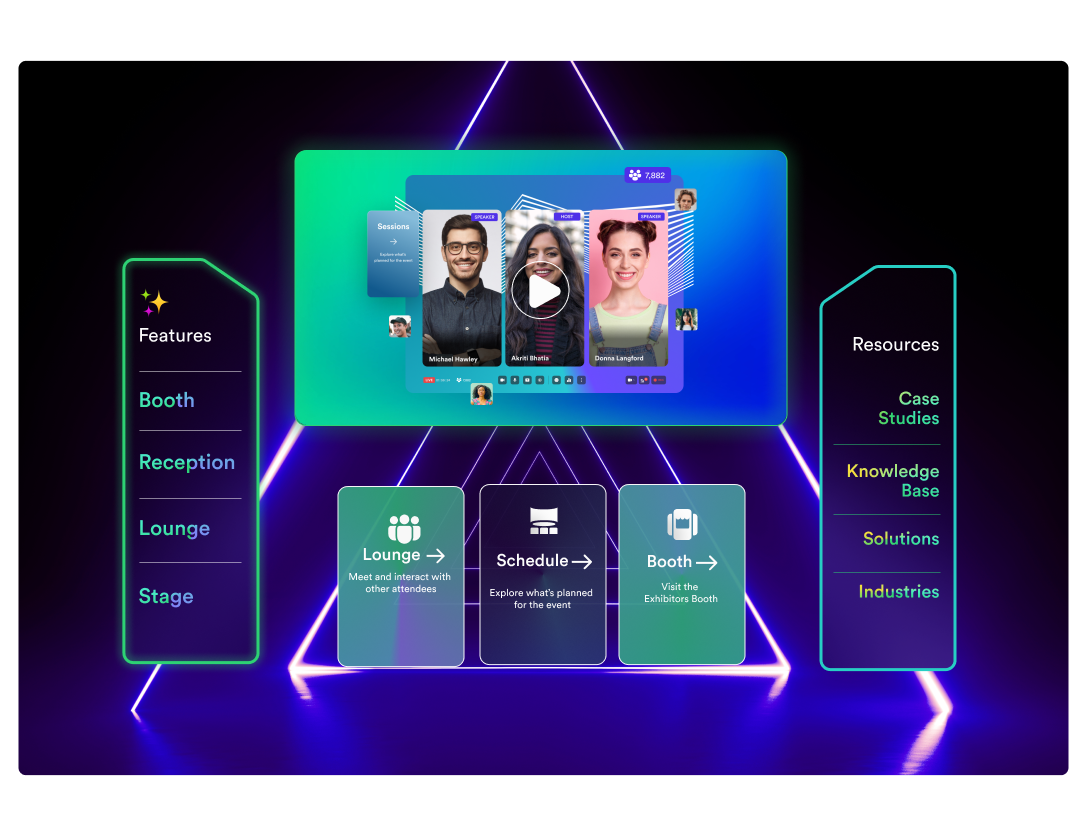The following virtual conference platforms are some of the more popular ones to consider:
Airmeet
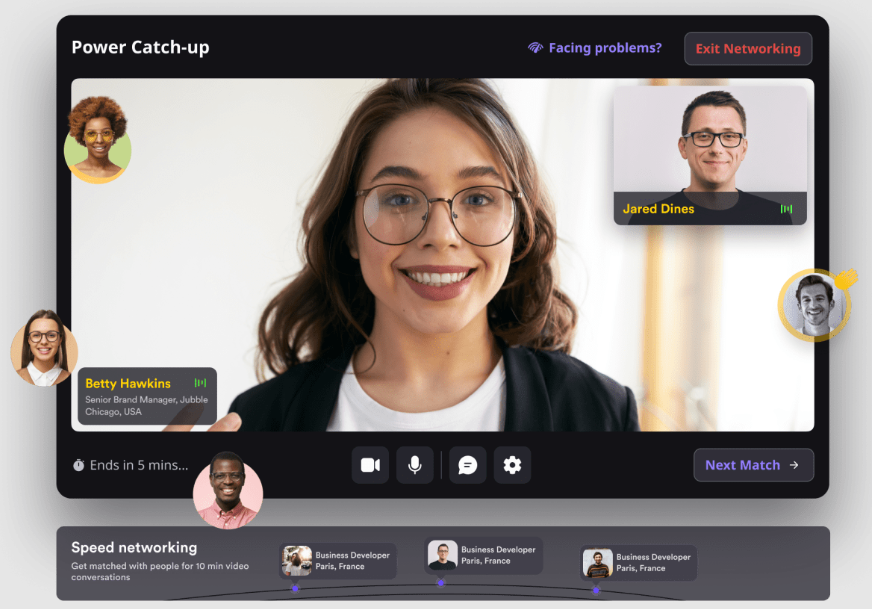
Airmeet is a highly recommended platform for hosting virtual conferences, events, and webinars. It empowers you to host any event with ease and also encourages your audience to participate in the conversation.
Airmeet is committed to delivering highly interactive and engaging experiences. The platform is trusted by 4000+ organizations including Walmart, Volvo, Groww, Angel One, Airbus, Capgemini, Trinet, Spotify, Axios, and more. Every month, many brands worldwide choose Airmeet to host their events. Because of its user-friendly interface, global businesses love hosting events with Airmeet.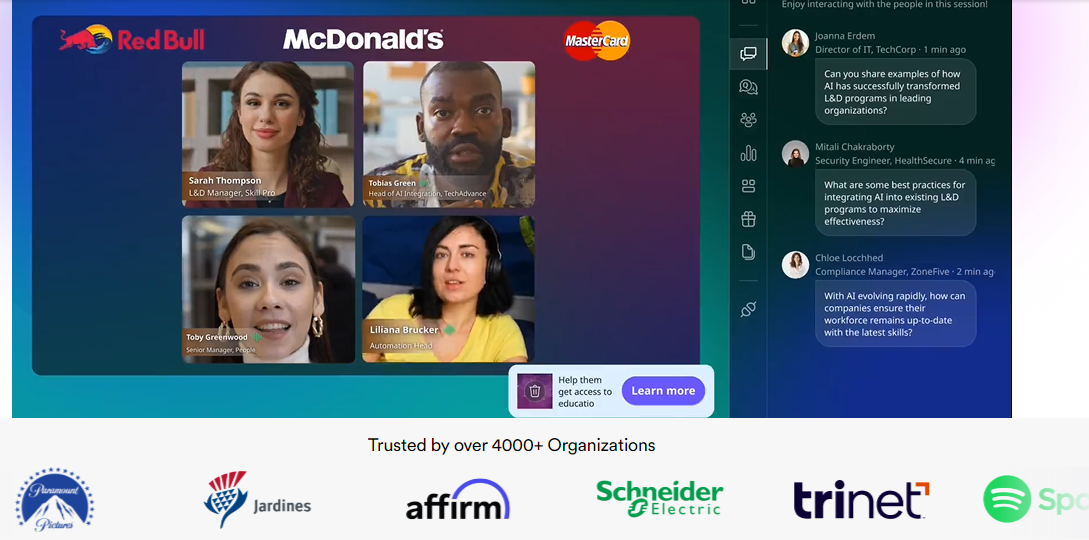
Some noteworthy features of Airmeet, such as:
- Live streaming capabilities with HD video & audio
- Registration & ticketing option
- Virtual lobby
- Branding & customization
- Exhibitor booths
- Interactive tools
- Breakout rooms
- Networking longue
- Event marketing & email customization option
- AI-driven customization and content recommendations
- Advanced analytics & reporting
- Integration with other platforms like Slack, Hubspot & more
Why Airmeet should be at the top of your list to host a virtual conference. Here’s why.
Airmeet is undisputed when it comes to virtual conference technology. Airmeet has the world’s first Event Experience Cloud that gives full control over the way people want to organize their events. An all-in-one event experience solution that comes with four products AirStudio, AX360, AirControl, and AirIntel.
Zoho Meeting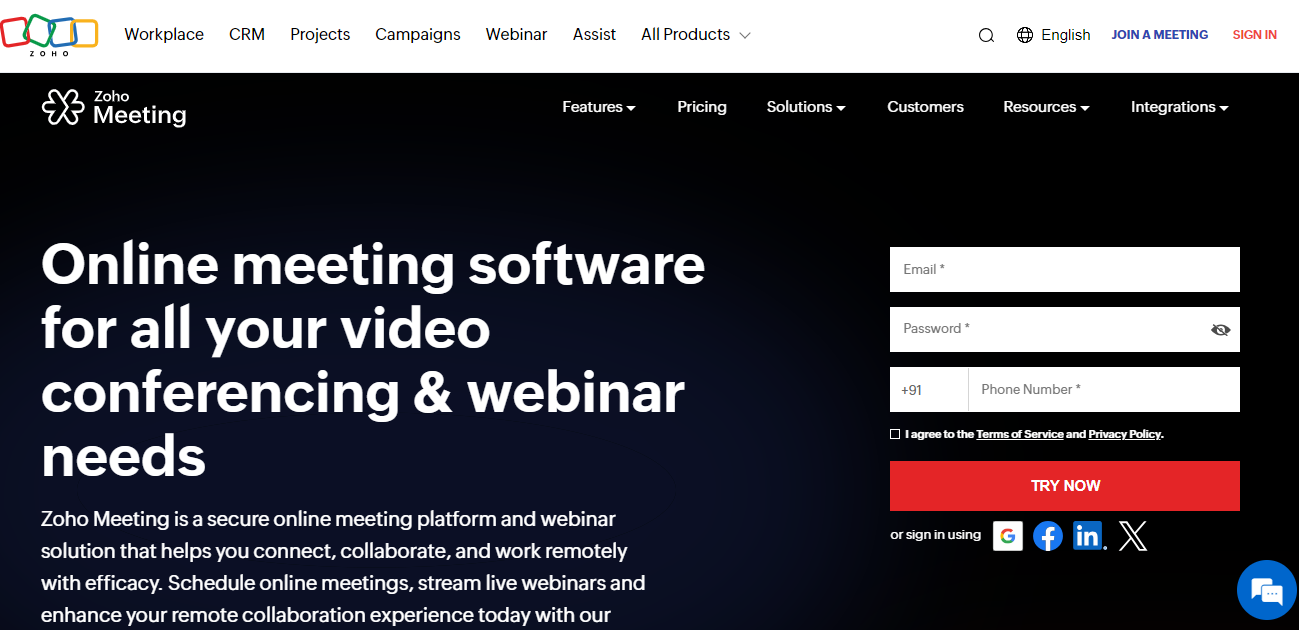
Zoho Meeting is an online video conferencing software that helps you host virtual meetings, digital conferences, online webinars, and more. It is a secure online conference platform to connect, collaborate, and engage with your audiences.
Zoho Meeting is the perfect platform if you want to schedule online meetings, host virtual conferences, and stream live webinars. Whether you’re a small startup or a large enterprise, Zoho Meeting empowers you to host cost-effective online events with ease.
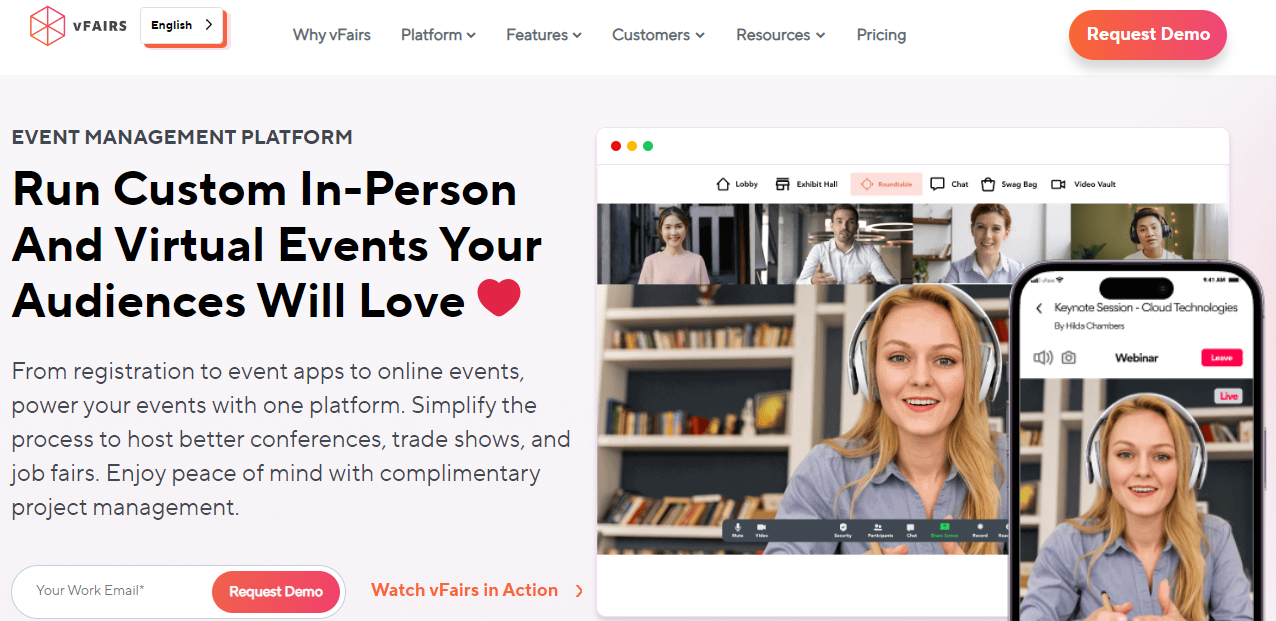
vFairs is an end-to-end event management platform that helps businesses plan, and manage stress-free in-person, virtual, and hybrid events. The platform is known for its immersive virtual environments.
It offers a range of features to make your digital event engaging and exciting such as immersive 3D environments, customizable virtual booths, networking, live chat, polls, and gamification, enhancing attendees’ overall virtual event experience.
vFairs is recognized for its user-friendly interface and excellent customer support, making it a popular choice among organizations of all sizes seeking to create engaging virtual event experiences.
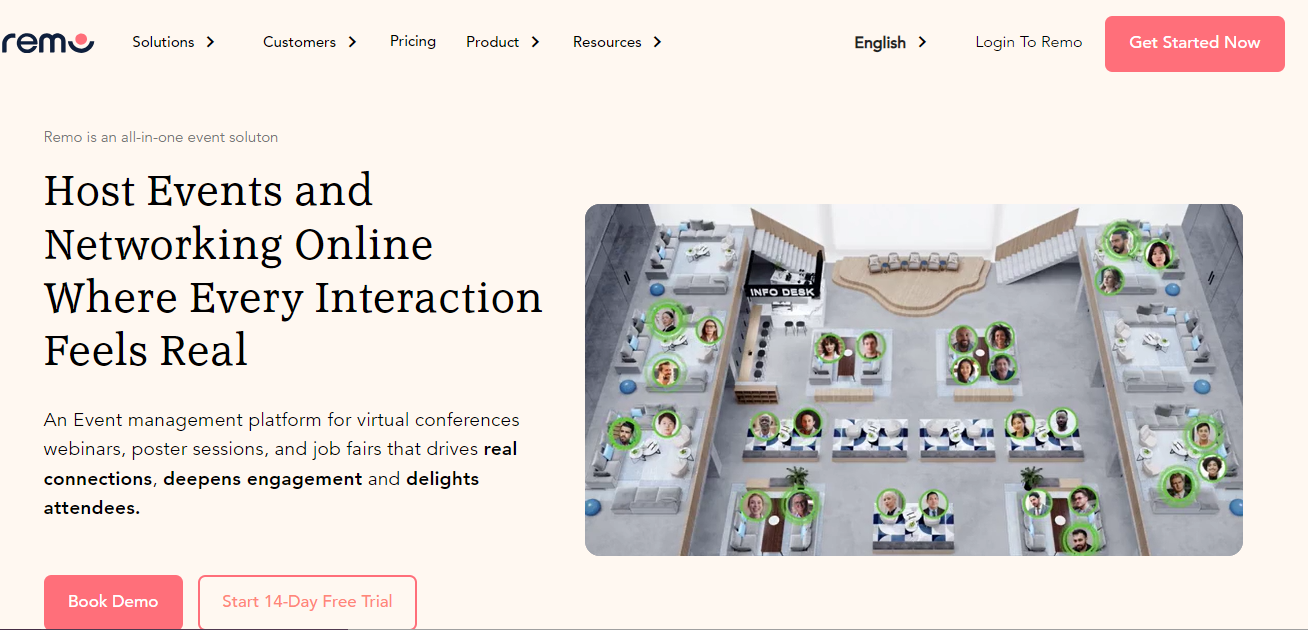
Remo is a virtual event management platform, perfect for hosting virtual conferences and webinars. It focuses on building interesting and interactive experiences that simulate in-person events.
The platform supports multiple event formats such as job fairs, trade shows, networking events, etc. The platform is trusted by over 1000+ organizations worldwide including SONY, IBM, Honeywell, and more.
With Remo, you can create stunning online events easily. It empowers you to effortlessly organize and execute amazing online & hybrid events.
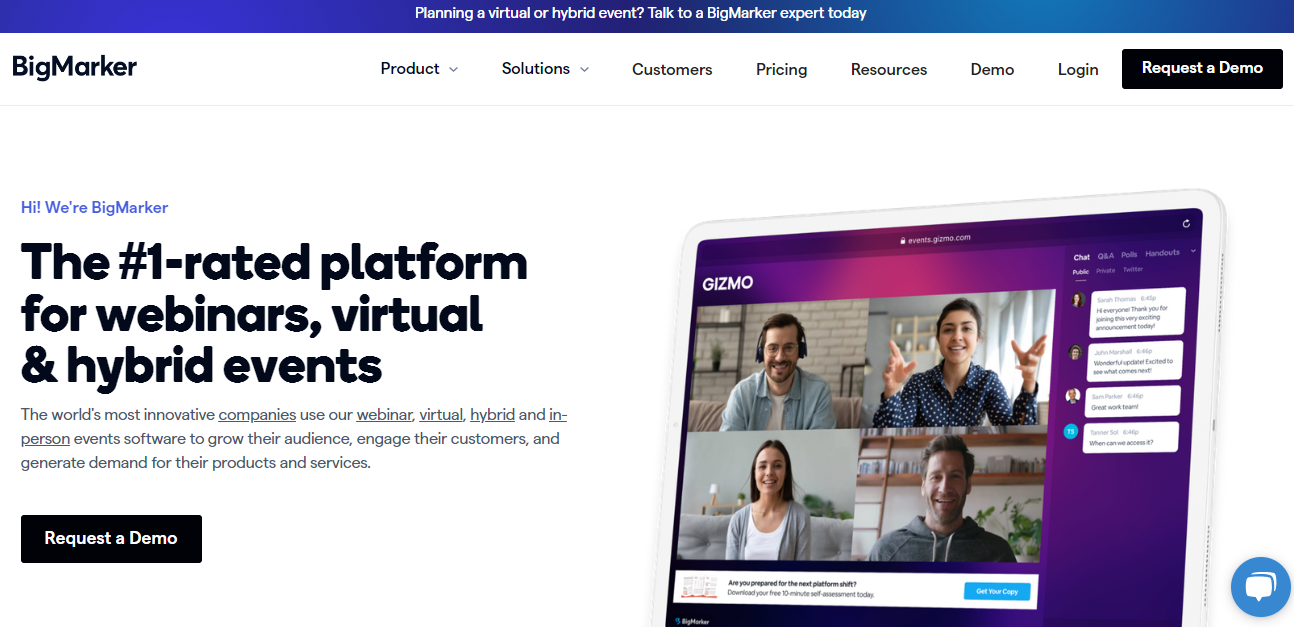
Bigmarker is a great platform to create, host, and manage virtual conferences from your computer or mobile device.
Bigmarker offers all the tools you need to host successful virtual and hybrid events such as customizable registration pages, email builder, ticketing, webinar types, custom landing pages, engagement tools, recording options, networking, and more.
It is a good event management software for enterprises hosting webinars, virtual conferences, and hybrid conferences.
Whova
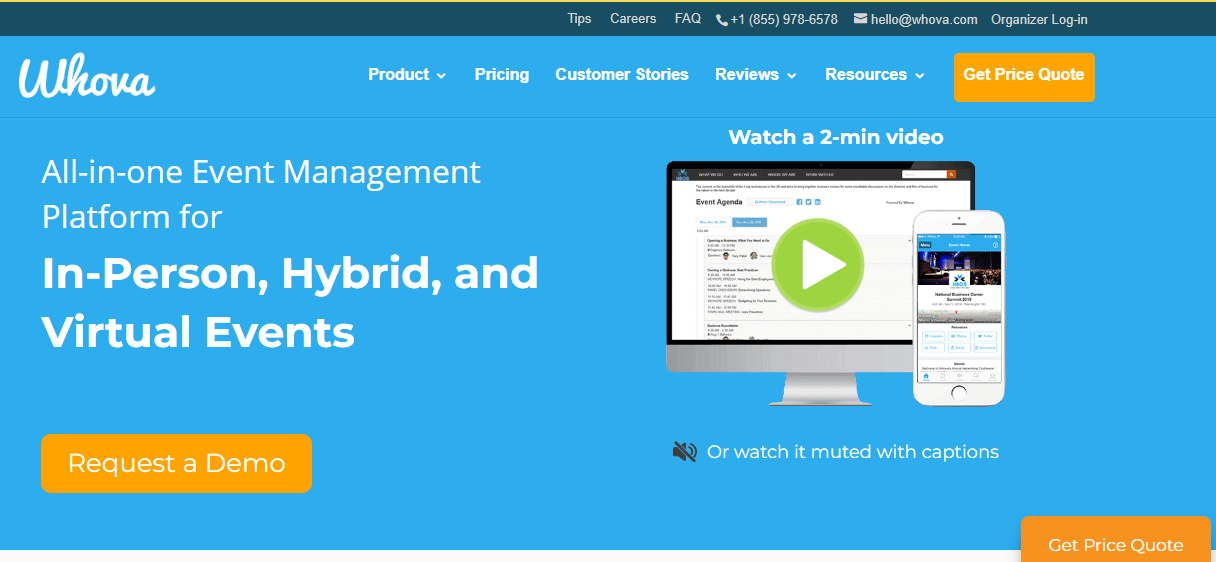
Whova is a comprehensive event management solution that offers a range of tools to help businesses plan, execute, and analyze their online events.
It supports all types of formats such as in-person, virtual, and hybrid, and ensures your event runs smoothly.
Their mobile event app allows you to get attendee insights in real-time. Whova is a one-stop solution for managing seamless virtual events.
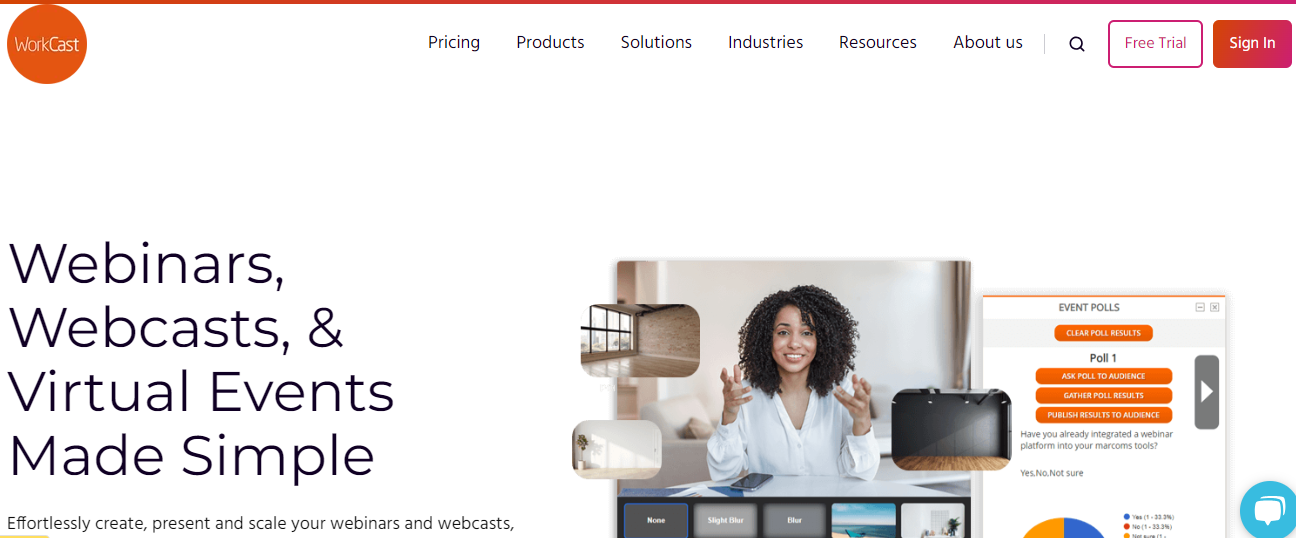
Workcast, a cloud-based platform, is widely utilized for hosting virtual events, webinars, and webcasts. You do not need to download software on your laptop or computer. Just connect to the internet and host an event & access its data through a web browser.
Webcast offers a simple setup process as well as customization options for creating and managing events. They feature a powerful reporting tool that provides real-time insights into event registrations and attendee engagement.
It is a good solution for businesses looking to host and manage online events & webinars.
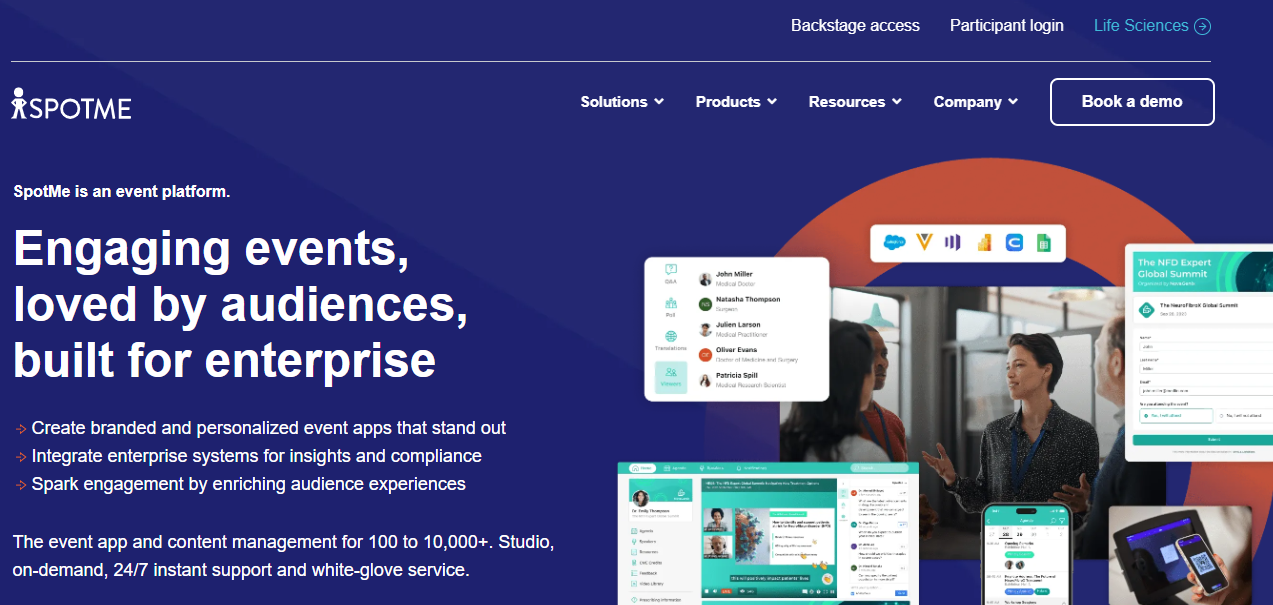
Spotme is an all-in-one event management solution that allows you to host in-person, virtual, and hybrid events. With Spotme, businesses can host seamless events with branded and compliant event apps.
This platform is trusted by Fortune 500 companies and boasts over 10 million users. Spotme offers numerous features to host a stress-free event such as event builder, event registration, attendee tracking, audience engagement tools like live chat, polls, Q&A, analytics & reporting, and more. It has everything you need to host a successful event.
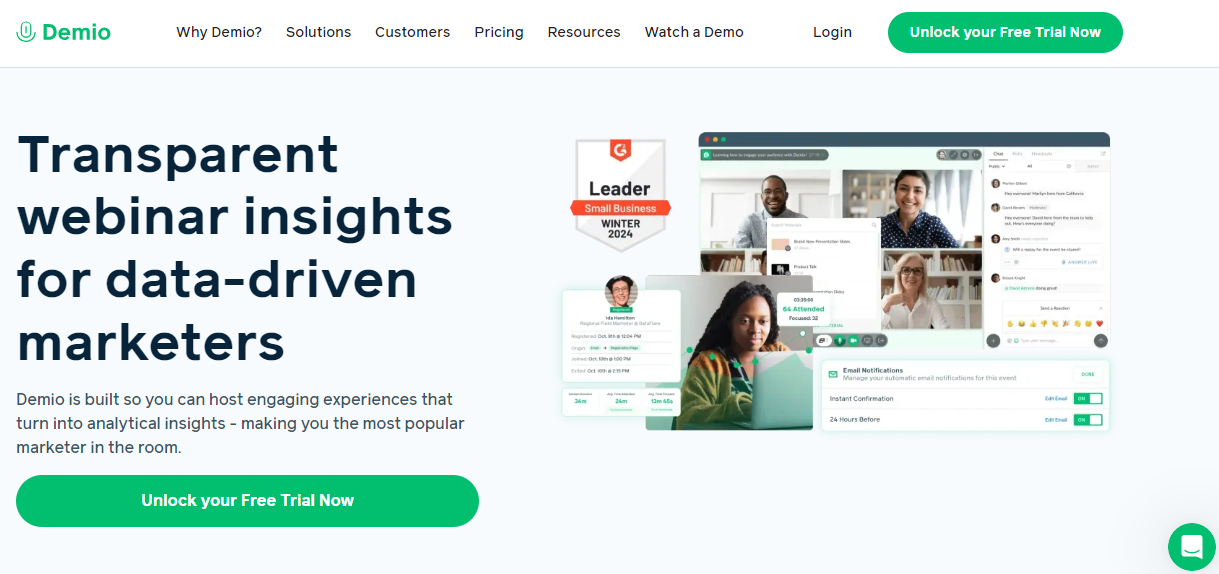
Demio is an all-in-one platform designed for hosting webinars and virtual events. The platform is known for creating impactful digital events that engage the audience and elevate your brand.
It offers features like real-time chat, polls, Q&A sessions, and audience spotlighting, all designed to boost participation and keep attendees fully engaged in the event.
Demio also provides analytics to track attendee behavior and engagement.
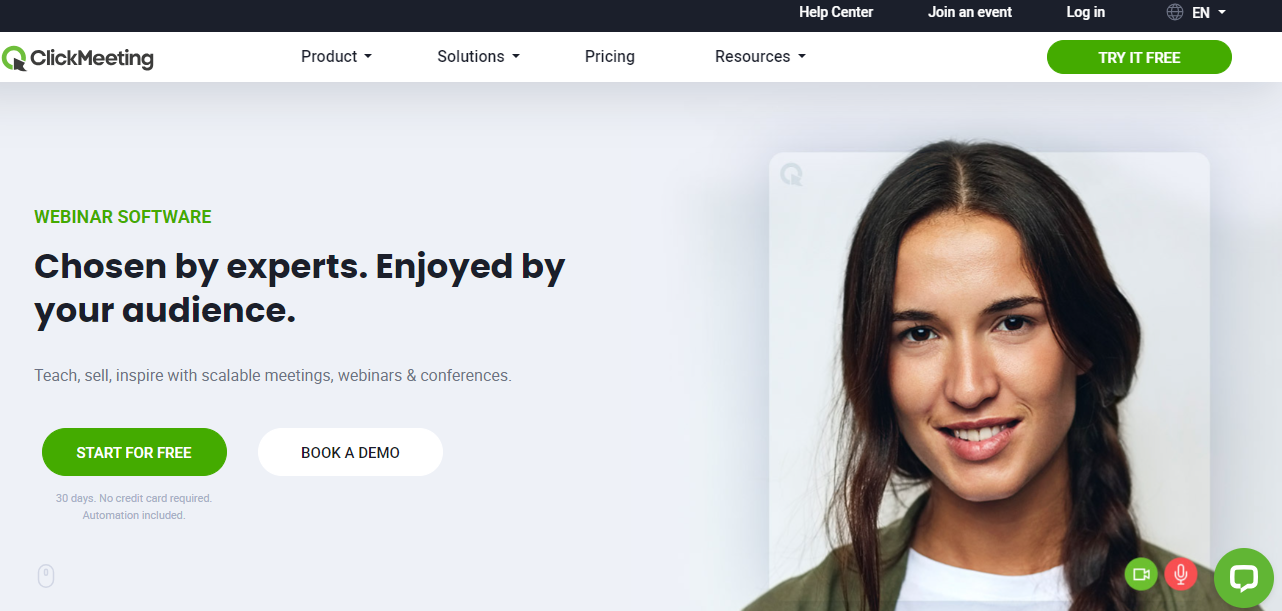
ClickMeeting is a high-quality software for scheduling online meetings, webinars, and events. Its user-friendly interface and wide range of features enable you to host large gatherings with ease.
With ClickMeeting, you can hold a product demonstration, run online business meetings, and share your expertise through online courses & training sessions. Plus, it allows you to host huge online events with up to 10,000 attendees.



